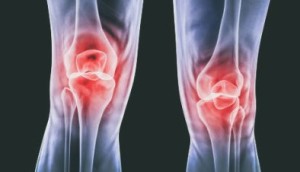Synovial fluid is a viscous, non-Newtonian fluid found in the cavities of synovial joints. It is clear, pale yellow, viscid, and does not clot. Synovial fluid is a plasma dialysate modified by constituents secreted by the joint tissues. The principal role of synovial fluid is to reduce friction between the articular cartilages of synovial joints during movement, shock absorption and nutrient and waste transport. The major difference between synovial fluid and other body fluids derived from plasma is the high content of hyaluronic acid in synovial fluid.
Synovial fluid have two main functions: to aid in the nutrition of articular cartilage by acting as a transport medium for nutritional substances, like glucose, and to aid in the mechanical function of joints by lubrication of the articulating surfaces.
Normal synovial fluid complement levels in humans will be approximately 10% of the serum values. In the inflamed joints, synovial fluid complement levels will vary. The variation has some prognostic value in human rheumatoid arthritis patients.
Biochemically, the synovial fluid is an ultrafiltrate of plasma across the synovial membrane enriched with various compounds produced by the synoviocytes. In normal conditions, the biochemical composition of the synovial fluid is similar to that of plasma. In pathological conditions (i.e. inflamed conditions), laboratory evaluation of synovial fluid provides information about the pathology of the condition affecting the joint.
Microscopic examination of Synovial Fluid can be performed for crystals, white blood cell count, microorganisms, and possible unusual traits. Chemical analysis was done for Uric acid content, Glucose levels, Lactate dehydrogenase and Protein levels. And physical examinations can be done like appearance, to include color, viscosity and other physical characteristics.
A classification system of articular diseases and synovial fluid that adheres more closely to the pathologic findings of diseased articular tissue. This system has three main categories: type 1, normal; type 2, inflammatory nonpurulent; and type 3, inflammatory purulent.
Synovial fluid analysis can be done in order to help diagnose the cause of joint inflammation, swelling, pain and fluid accumulation.

